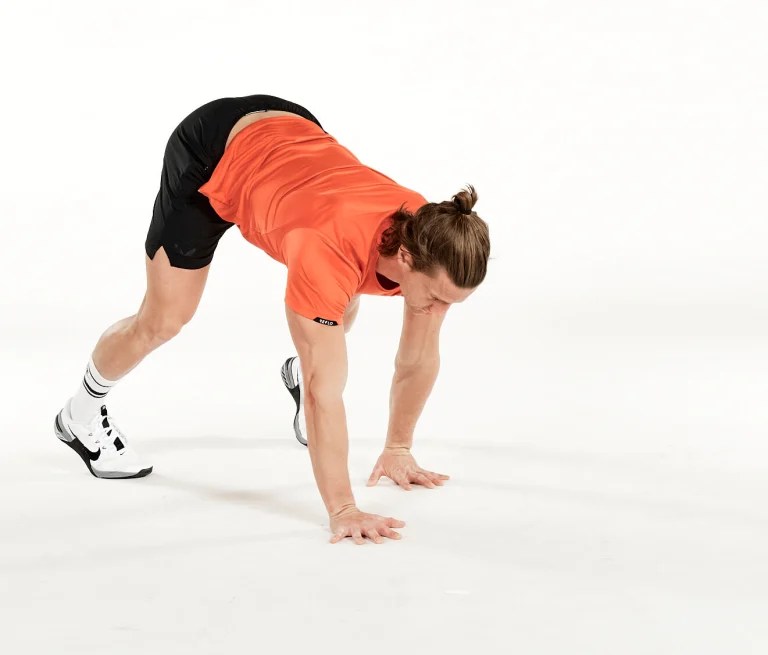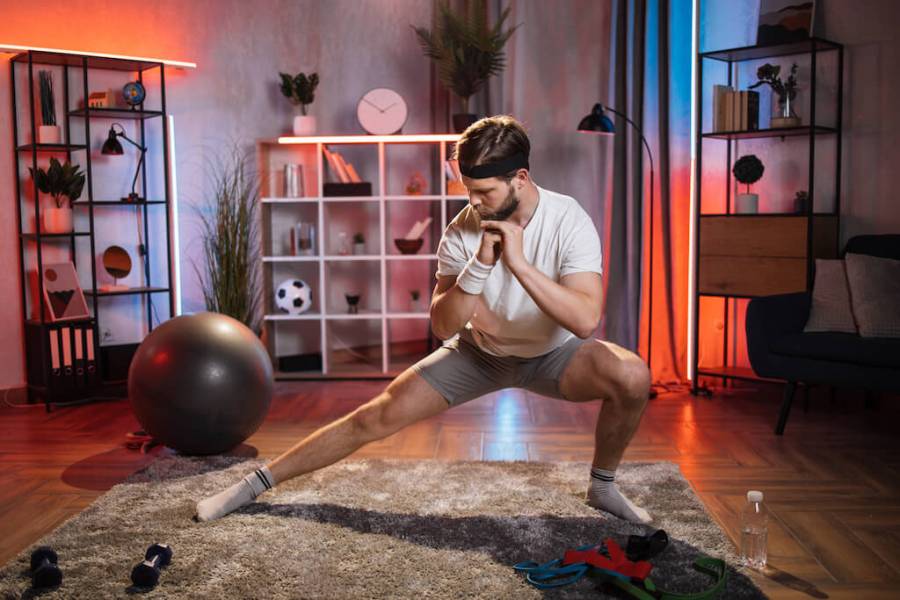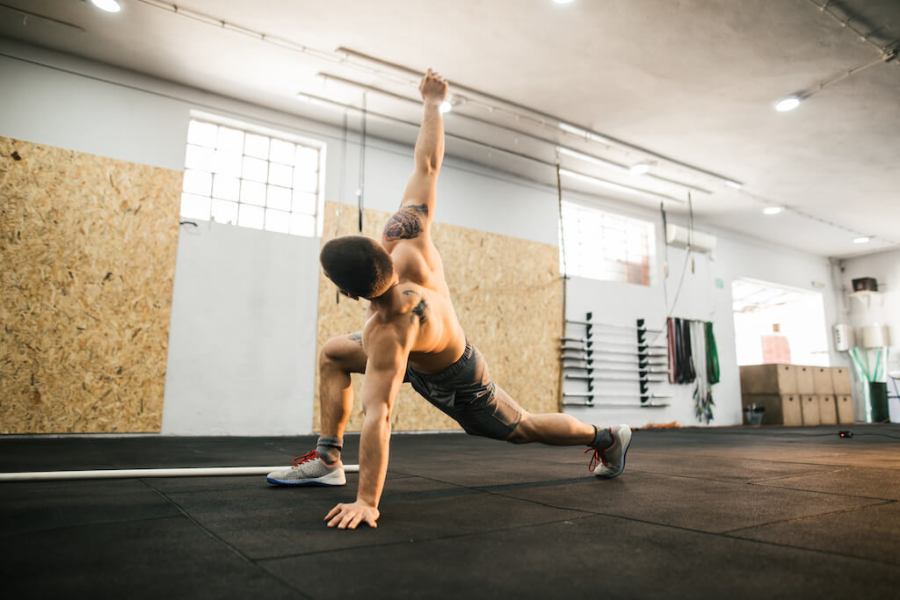Poor mobility could be hampering your strength – here’s how to improve your mobility while ramping up your strength in the process…
Functional movement is one of the most neglected components of many strength training regimes. No matter how heavy you lift, if your mobility is in any way limited, impaired or dysfunctional, you will never get the results you crave.
Related: Best stretches for weightlifting
Improving your mobility and movement patterns will enhance your range of motion and ensure you activate more muscle fibres when you lift, helping to crank up your strength gains.
“Mobility is an often-overlooked aspect of the training process, but it can reap huge benefits,” explains trainer Tom Cuff-Burnett.
“Mobility refers to the ability of a joint to move actively through a range of motion. It is not only the muscles stretching over a joint, but also how far the joint moves within the joint capsule.
“Mobility also takes into account motor control within the nervous system: in other words, how much ‘conscious control’ we have over that particular joint or limb.
“Good mobility will contribute to how efficiently you are able to perform a movement, and whether you can lift with correct technique, as well as playing a role in injury prevention and postural improvement.”
How to improve mobility
1. Swap static stretches for targeted mobility work
“Most gym-goers know that stretching is beneficial for both warming up their muscles and cooling down post-session, but mobility training can give you that extra edge,” explains Cuff-Burnett.
“That is because mobility is based on movement and motor control, so it can be far more effective at creating deeper muscle memory and joint activation than traditional static stretching.
“Your central nervous system operates an in-built safety mechanism, by limiting your mobility based on how much control you have in a certain movement. So by including mobility training, you will empower your joints to move through a greater range of motion.”
A good pre-workout mobility drill for the upper body is the ‘cat-cow’ pose: starting from an all-fours position, sink your back down and lift your head up to curve your spine like a cat, then tuck your head and tailbone in to arch your spine like a cow. Do 8 reps of each.
You can also do ‘wrist walks’ to boost your wrist mobility ahead of any push or pull exercises: from an all-fours position, rotate your palms so your fingers are facing towards your knees, then slowly walk the hands away from the body, then back again. Repeat 8 times.
A good pre-workout lower-body mobility drill, meanwhile, is the cossack squat: from a wide squatting stance, squat down on one leg while keeping one leg straight out to the side. Perform 5-10 reps on each side.

Walk-outs will get your heart rate up and prime your body for the work to come
2. Do controlled articular rotations
“A great way to work on joint range of motion is to use CARs – or ‘controlled articular rotations’,” says Cuff-Burnett.
“These involve performing circular joint motions, and you are trying to create a larger circle the more you do it. This will increase your control in the outer limits of your usable range of motion.”
Start with the hips and shoulders: improving mobility in these two areas will give you the most ‘bang for your buck’ in terms of alleviating tightness in other parts of the body, too.
3. Move more
These pre-workout mobility exercises and shoulder and hip rotations will really help, but the secret to building fluid movement skills is to move more often.
“For mobility to increase and for those gains to last, you need to do it frequently,” says Cuff-Burnett. “Try to make your mobility drills a daily practice: a simple ten-minute full-body mobility flow is ideal.”
A sample mobility flow routine would include the cat-cow exercise above, as well as high plank walk-outs:
- Set your feet shoulder-width apart, then hinge at the hips to reach down towards the floor.
- Once your hands make contact with the floor, slowly walk them out in front of you until your palms end up underneath your shoulders.
- Return to your original position by pushing your hips into the sky and walking your hands back towards your feet.
- Repeat 8 times.
Then finish with the ‘world’s greatest stretch’:
- Begin in a half-kneeling stance, with one knee on the floor and one foot in front of you.
- Place your opposite hand on the floor in-line with the front foot, then raise your other arm towards the ceiling, looking to the tips of your fingers as you do so.
- Try to rotate the arm past the midline of the body, before bringing it back down and threading it through and underneath the other armpit.
- Repeat 8 times on each side.
4. Move beyond the foam roller
Foam rollers can keep you feeling supple and loose, but you need to do more dynamic movements to really boost your mobility.
“Foam rolling alone is not going to make you more mobile,” warns Cuff-Burnett.
“Consider what happens when you roll your ITB (iliotibial band): you may be oscillating that particular tissue, but the joint above it, the hip, and below it, the knee, remain immobile. It is therefore better to use a foam roller to prepare some aching muscles, but then to go into your full sequence of mobility exercises above to apply more movement through the joint’s maximum range of motion.”

Don’t just move forward and back. Good mobility depends upon working through every plane of motion | Photography: Getty Images
5. Work through the three planes of motion
To boost your overall mobility, start thinking in three dimensions.
“In everyday life, not everything involves moving in straight lines,” says Cuff-Burnett. “There are three planes of motion in which we move: sagittal (forward and back), frontal (side-to-side) and transverse (twisting or rotational). So you must include movements that address these three ‘dimensions’.”
For example, a reverse lunge is good for hip, knee and ankle mobility in the sagittal plane. But a ‘clock lunge’ – stepping the leg out diagonally and to the side as you work your way around an imaginary clock face – will add in a lateral and rotational element to get you working across all the planes of motion.
Words: Mark Bailey







